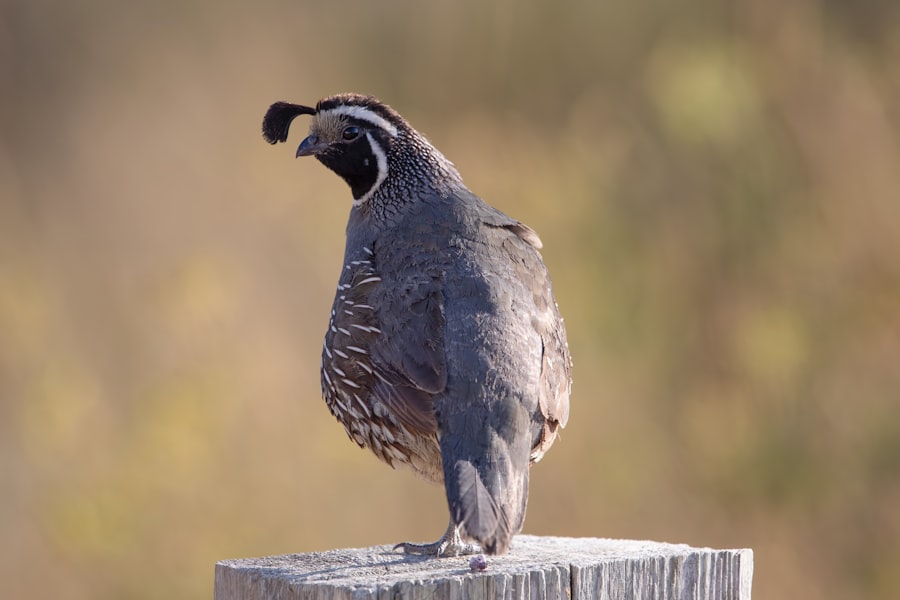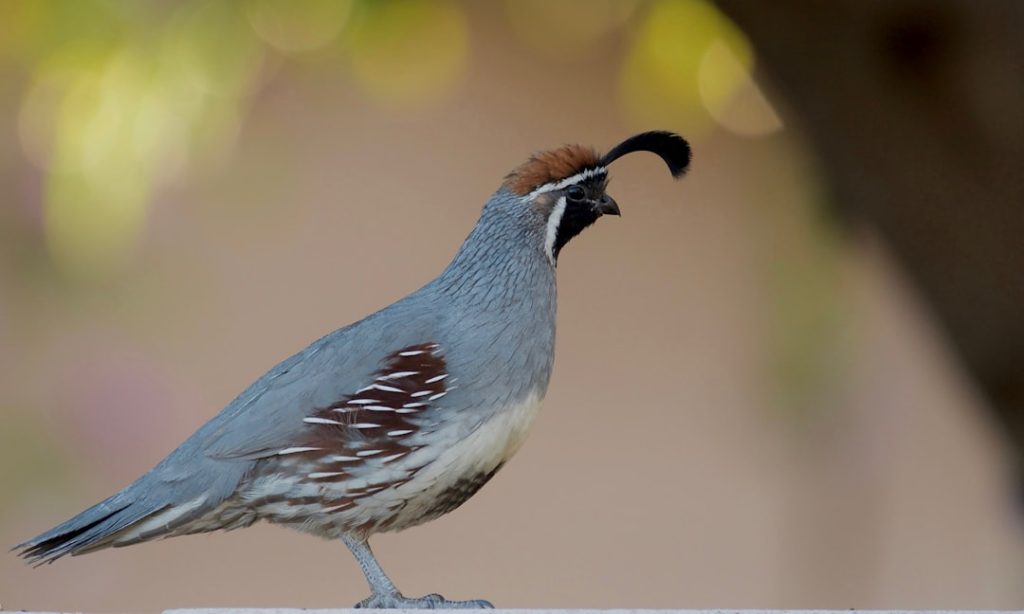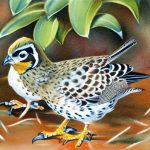Quails are small, ground-dwelling birds that belong to the family Phasianidae. They are known for their distinctive calls and are popular game birds in many parts of the world. In the Philippines, quails are not only hunted for sport but are also raised for their meat and eggs. The country is home to several species of quails, each with its own unique characteristics and traits. From the native Philippine quail to the Japanese quail, Chinese painted quail, bobwhite quail, and king quail, these birds play an important role in the country’s agricultural industry and provide a source of livelihood for many Filipinos.
Quail farming has become increasingly popular in the Philippines due to the birds’ fast growth rate, high reproductive potential, and relatively low maintenance requirements. As a result, many farmers and backyard enthusiasts have turned to quail breeding as a means of supplementing their income. With the demand for quail meat and eggs on the rise, understanding the different quail breeds and their specific needs is essential for successful breeding and rearing. In this article, we will explore the various quail species found in the Philippines, their characteristics, and the best practices for breeding and rearing each breed.
Table of Contents
Key Takeaways
- Quails are small game birds that are popular for their meat and eggs in the Philippines.
- The Native Philippine Quail, also known as the Rain Quail, is a small bird with a brown and buff plumage.
- The Japanese Quail is the most common quail breed raised for commercial purposes in the Philippines.
- The Chinese Painted Quail, also known as Button Quail, is popular for its colorful plumage and small size.
- The Bobwhite Quail, native to North America, is also raised in the Philippines for its meat and eggs.
- The King Quail, also known as the Blue-breasted Quail, is a small, ground-dwelling bird with a distinctive blue breast.
- Breeding and rearing different quail breeds in the Philippines require proper housing, feeding, and management practices to ensure optimal growth and production.
The Native Philippine Quail (Coturnix coturnix)
The native Philippine quail, scientifically known as Coturnix coturnix, is a small bird species that is endemic to the Philippines. It is also known as the “pugo” in Filipino and is a popular game bird among local hunters. The Philippine quail is known for its distinctive brown and white plumage, with a mottled appearance that provides excellent camouflage in its natural habitat. These birds are typically found in grasslands, agricultural fields, and open woodlands throughout the country.
In terms of breeding and rearing, native Philippine quails are relatively easy to manage compared to other quail species. They are known for their hardiness and adaptability to different environmental conditions, making them well-suited for backyard farming. These birds reach sexual maturity at around 6-8 weeks of age and can lay up to 12-14 eggs at a time. When it comes to incubation, native Philippine quail eggs require a consistent temperature of around 37.5 degrees Celsius and high humidity levels for successful hatching. Once hatched, the chicks can be reared in brooders or small pens with proper heating and lighting to ensure their growth and development.
Overall, the native Philippine quail is a valuable bird species that plays an important role in the country’s ecosystem and agricultural industry. With proper management and care, these birds can provide a sustainable source of meat and eggs for local farmers and breeders.
The Japanese Quail (Coturnix japonica)
The Japanese quail, scientifically known as Coturnix japonica, is another popular quail species that is widely bred and reared in the Philippines. Also known as the “Jumbo” or “Nippon” quail, this species is native to East Asia and has been domesticated for centuries for its meat and eggs. Japanese quails are known for their rapid growth rate, high egg production, and relatively docile nature, making them an ideal choice for commercial quail farming.
Japanese quails are smaller in size compared to other quail species, with a distinctive speckled plumage that varies in color from brown to white. These birds are highly adaptable to different environmental conditions and can thrive in captivity with proper housing, feeding, and management. When it comes to breeding and rearing, Japanese quails reach sexual maturity at around 6-8 weeks of age and can lay up to 250-300 eggs per year under optimal conditions. Their eggs are small but packed with nutrients, making them a popular choice among health-conscious consumers.
In terms of rearing, Japanese quail chicks require a warm and dry environment with access to high-quality feed and clean water. Proper brooding facilities with adequate heating and lighting are essential for their growth and development. Additionally, regular monitoring of their health and welfare is crucial to prevent diseases and ensure optimal productivity. Overall, Japanese quails are a valuable quail species that provides a sustainable source of meat and eggs for both small-scale and commercial farmers in the Philippines.
The Chinese Painted Quail (Coturnix chinensis)
The Chinese painted quail, scientifically known as Coturnix chinensis, is a small bird species that is native to Southeast Asia, including the Philippines. Also known as the “button quail” or “blue-breasted quail,” this species is characterized by its colorful plumage and diminutive size. Chinese painted quails are popular among aviculturists and bird enthusiasts due to their attractive appearance and unique behaviors.
In terms of breeding and rearing, Chinese painted quails have specific requirements that differ from other quail species. These birds are known for their secretive nature and prefer dense vegetation for nesting and foraging. They are also more sensitive to environmental changes and require careful management to thrive in captivity. When it comes to breeding, Chinese painted quails reach sexual maturity at around 8-10 weeks of age and can lay up to 8-12 eggs at a time. Their eggs are small but have a high hatchability rate under proper incubation conditions.
Rearing Chinese painted quail chicks requires attention to detail, including providing suitable brooding facilities with ample space, heating, and ventilation. These birds are more delicate compared to other quail species and require a diet rich in protein and essential nutrients for optimal growth and development. Additionally, regular observation of their behavior and health status is crucial to ensure their well-being in captivity. Overall, Chinese painted quails are a unique addition to the avicultural landscape in the Philippines and provide an opportunity for enthusiasts to appreciate their beauty and charm.
The Bobwhite Quail (Colinus virginianus)
The bobwhite quail, scientifically known as Colinus virginianus, is a popular game bird that is native to North America but has been introduced to the Philippines for hunting and conservation purposes. Also known as the “northern bobwhite,” this species is characterized by its distinctive call that sounds like “bob-white” or “poor-bob-white.” Bobwhite quails are highly valued for their meat and are sought after by hunters for sport due to their elusive nature.
In terms of breeding and rearing, bobwhite quails have specific requirements that differ from other quail species commonly found in the Philippines. These birds prefer open grasslands with access to water sources for nesting and foraging. They are also more sensitive to changes in their environment and require careful management to thrive in captivity. When it comes to breeding, bobwhite quails reach sexual maturity at around 16-20 weeks of age and can lay up to 12-16 eggs at a time. Their eggs require specific incubation conditions with consistent temperature and humidity levels for successful hatching.
Rearing bobwhite quail chicks requires attention to detail, including providing suitable brooding facilities with ample space, heating, and ventilation. These birds have specific dietary requirements that include a balanced mix of seeds, grains, insects, and greens for optimal growth and development. Additionally, regular monitoring of their behavior and health status is crucial to ensure their well-being in captivity. Overall, bobwhite quails are a valuable addition to the avicultural landscape in the Philippines and provide an opportunity for enthusiasts to appreciate their unique characteristics and conservation efforts.
The King Quail (Excalfactoria chinensis)

The king quail, scientifically known as Excalfactoria chinensis, is a small bird species that is native to Southeast Asia, including the Philippines. Also known as the “button quail” or “Chinese painted quail,” this species is characterized by its diminutive size and cryptic plumage that provides excellent camouflage in its natural habitat. King quails are popular among aviculturists and bird enthusiasts due to their unique behaviors and vocalizations.
In terms of breeding and rearing, king quails have specific requirements that differ from other quail species commonly found in the Philippines. These birds prefer dense vegetation for nesting and foraging and are more sensitive to environmental changes compared to other quail species. When it comes to breeding, king quails reach sexual maturity at around 8-10 weeks of age and can lay up to 8-12 eggs at a time. Their eggs require specific incubation conditions with consistent temperature and humidity levels for successful hatching.
Rearing king quail chicks requires attention to detail, including providing suitable brooding facilities with ample space, heating, and ventilation. These birds have specific dietary requirements that include a balanced mix of seeds, grains, insects, and greens for optimal growth and development. Additionally, regular observation of their behavior and health status is crucial to ensure their well-being in captivity. Overall, king quails are a unique addition to the avicultural landscape in the Philippines and provide an opportunity for enthusiasts to appreciate their beauty and charm.
Breeding and Rearing Different Quail Breeds in the Philippines
Breeding and rearing different quail breeds in the Philippines require careful consideration of each species’ specific requirements and traits. Whether it’s the native Philippine quail, Japanese quail, Chinese painted quail, bobwhite quail, or king quail, understanding their distinct characteristics is essential for successful breeding and rearing practices.
When it comes to breeding different quail breeds in the Philippines, it’s important to provide suitable housing facilities that cater to each species’ needs. This includes providing adequate space, ventilation, heating, lighting, nesting areas, and access to clean water sources. Additionally, proper nutrition plays a crucial role in ensuring optimal reproductive performance and egg quality among different quail breeds.
Rearing different quail breeds in the Philippines requires attention to detail when it comes to brooding facilities, feeding practices, disease prevention, and overall welfare management. Each species has specific dietary requirements that need to be met for optimal growth and development. Regular monitoring of their behavior, health status, and environmental conditions is essential to prevent diseases and ensure their well-being in captivity.
In conclusion, breeding and rearing different quail breeds in the Philippines offer opportunities for farmers, backyard enthusiasts, aviculturists, and conservationists alike. By understanding each species’ unique characteristics and requirements, individuals can contribute to sustainable farming practices while appreciating the beauty and value of these remarkable bird species in the country’s agricultural landscape.
If you’re interested in learning more about different breeds of quails in the Philippines, you may also want to check out an article on Poultry Wizard about the best practices for keeping chickens in the Producers Pride Sentinel Chicken Coop. This article provides valuable insights into creating a suitable environment for poultry, which can also be beneficial for quail farming. You can find the article here.
FAQs
What are the different breeds of quails in the Philippines?
In the Philippines, some of the common breeds of quails include the Japanese quail (Coturnix japonica), the Bobwhite quail (Colinus virginianus), and the King quail (Excalfactoria chinensis). Each breed has its own unique characteristics and is suitable for different purposes such as meat or egg production.
What are the characteristics of Japanese quails?
Japanese quails are the most common breed of quails in the Philippines. They are known for their fast growth, high egg production, and adaptability to various environmental conditions. They are also relatively easy to raise and are popular for both meat and egg production.
What are the characteristics of Bobwhite quails?
Bobwhite quails are another popular breed in the Philippines. They are known for their distinctive call, which sounds like “bob-white.” They are primarily raised for their meat and are known for their delicious, tender flesh. They are also popular for hunting and as pets due to their attractive appearance.
What are the characteristics of King quails?
King quails, also known as button quails, are the smallest breed of quails in the Philippines. They are known for their colorful plumage and are often kept as ornamental birds. They are also raised for their small, delicate eggs, which are considered a delicacy in some cultures.
Meet Walter, the feathered-friend fanatic of Florida! Nestled in the sunshine state, Walter struts through life with his feathered companions, clucking his way to happiness. With a coop that’s fancier than a five-star hotel, he’s the Don Juan of the chicken world. When he’s not teaching his hens to do the cha-cha, you’ll find him in a heated debate with his prized rooster, Sir Clucks-a-Lot. Walter’s poultry passion is no yolk; he’s the sunny-side-up guy you never knew you needed in your flock of friends!







